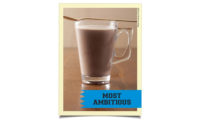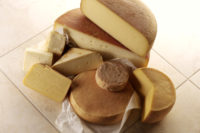
Let's think about it. On-the-go lifestyles and new beverages in plastic, resealable packaging have made our traditional milk packaging out of date-and non-competitive. But research shows that if we offer people what they want, which is colder, flavored milk, in plastic packaging they will drink more of it.
Dairy producers firmly believe that if we work together and invest in innovation we can reverse the 21-year trend and increase fluid milk consumption. Consider the facts:
- The average American ages 18 and up consumes only 3-4oz of milk each day.
- Among children 18 years and younger, milk consumption is 120 million gallons per year less than it was 10 years ago . . . the majority of this lost volume occurred at schools.
- Generation after generation of adult milk drinkers has been lost because of their experiences as kids.
- The School Milk Pilot Test, conducted by the National Dairy Council®, showed an 18% unit increase and a 37% volume increase if we use plastic bottles and offer flavors.
- The more than 35 processors and 3,400 schools who have moved from cardboard to plastic have shown sustained increases that far exceed test levels.
- A new study shows that 83% of school children said the school milk in the plastic bottle was "better overall" compared to the identical school milk packaged in a paper carton.
- McDonald's®, Wendy's® and other regional foodservice chains that moved flavored milk from paperboard to plastic containers are seeing consistent sales increases.
We know there are some obstacles to change. These include the cost to convert processing plants from paper machines to plastic; the financial challenges faced by school districts; and individual business interests in NOT converting to plastic. These are obstacles, not impossibilities.
A total selling proposition needs to be used. DMI, nationally and locally, is committed to putting our financial and human resource investment into working with marketers that want to grow the business. Some expertise and resources through which we can help bring about change are innovation technology, research, the 3-A-Day of Dairy™ nutrition-marketing program, our position with schools including the New Look of School Milk and working with Action for Healthy Kids, and our successes in foodservice. DMI wants to work with leaders and innovators. I ask that we work together to change. We are standing at the crossroads and this time there's a clear path.

